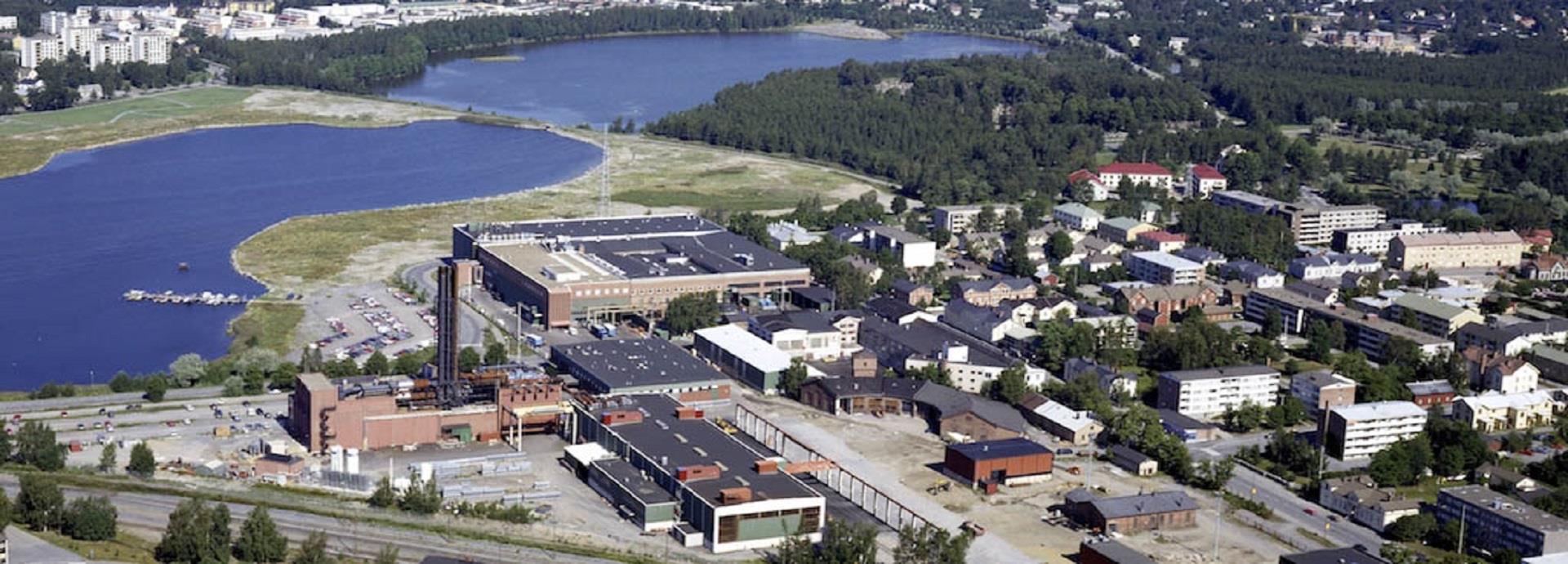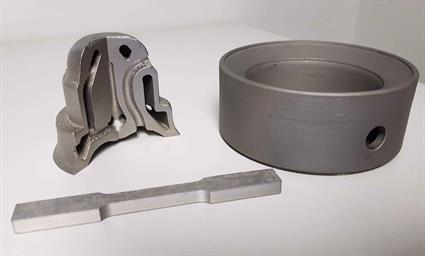

Linking with local manufacturing, Wärtsilä wants to launch a world-class 3D printing Research Centre in Vaasa. First order of business: creating a strong ecosystem which combines industry excellence with academic muscle.
Vaasa, Finland, could well become a global stronghold for ambitious additive manufacturing – if Wärtsilä succeeds in its plans to create a world-class Research Centre for 3D metal printing excellence on the west coast of Finland.
Steering the project along, Innovation Expert Juho Raukola believes that the potential of 3D metal printing is enormous – and that 3D printing has the power to usher in a brand new era in manufacturing.
“3D metal printing is on the verge of making a big breakthrough in 2020s,” Raukola says.
As a matter of fact, even the upcoming Research Centre is only a part of a bigger puzzle: Wärtsilä has plans for additive manufacturing and 3D printing to go systemic across the organisation.
Additive Manufacturing: Ground zero
But why focus on 3D printing wizardry in Vaasa? Raukola says the key here is proximity: as majority of Wärtsilä’s engine design takes place in Vaasa, it makes sense to have 3D printing services available next door.
“This way, when you’re looking at a new component for an engine and trying to figure out, if 3D metal printing could be the ticket, you can just go next door and push the boundaries of what is possible,” he explains.
Establishing a 3D printing Research Centre in Vaasa, however, is no small feat – and the project is still in its initial phases. Raukola envisions that the actual, physical construction of a brand new Research Centre could kick off in 2019 or 2020.
“Once the Centre is up and running, all of Wärtsilä’s operations will be able to tap into that knowledge base.”
Wanted: 3D printing excellence
The project is carried out as a collaboration between big companies, like Wärtsilä and ABB, local metal industry sub-contractors and schools, such as Vaasa University of Applied Sciences and University of Vaasa. Raukola comments that it is very important to combine versatile industry muscle with academic reach in this project.
“For example, the metal shops in Vaasa Region have been lacking resources to push 3D printing, but within this ecosystem, they can have access to new tools and contribute.”
And the schools? Raukola says that creating a “talent pipeline” is crucial for the over-all success of the project: once the students of Vaasa University of Applied Sciences, for example, get familiar with modern 3D printing techniques, they will provide a “homegrown” labour force for the Centre.
“3D printing is so cutting edge that nobody is really teaching it in schools yet. We want to collaborate with the schools in order to recruit graduates with knowledge of 3D printing tools and the ability to make the components that the industry needs.”
The industry – academia equation
Jorma Tuominen, Director of School of Technology at Vaasa University of Applied Sciences, is equally excited about the project. “When Wärtsilä gave the signal that they were ready to run with this, we wanted to participate immediately,” he says.
Tuominen has kept an eye on the development of 3D printing since the late 90’s – and admits to being surprised by the rapid pace of development in recent years.
“Now it seems that the technology has suddenly evolved tremendously,” he says, adding that even Formula 1 cars are now using 3D printed high performance components.
Presently, there are ten 3D printers available which use plastic materials – but moving into metal is an intriguing prospect for faculty and students alike. “There are already two teachers with the required 3D printing expertise and we’ve just hired a third one,” Tuominen reveals, adding that the school wants to be a strong contributor in the emerging 3D printing alliance.
“During the next five to ten years, there’s really no telling what 3D printing can achieve – the possibilities are amazing.”
Reaching the next level
The project also has some very powerful backup from Sweden, thanks to the innovation hub AMEXCI which is bringing together some of best expertise from top Nordic companies. Founded in December 2017, AMEXCI features participation from Wärtsilä, ABB, Electrolux, Husqvarna Group, FAM, Höganäs, Saab, Scania, SKF, Stora Enso and Atlas Copco.
AMEXCI’s CEO Edvin Resebo explains that a key reason why the group of 11 industry leaders came together to start the company was the prospect of working together in the field of additive manufacturing. The idea was not to gain experience simply on a ‘everyone for themselves’ basis, but to leverage the opportunity to learn from each other, and share experiences within the group.
“We are acting in a global environment where the technology development is moving very fast. The main drivers behind the development within what can be considered ‘the Additive Manufacturing Business’ are not in the Nordic Region, so it is important that we work together to stand strong in a competitive environment,” says Resebo.
Additive tech is just getting started
When talking about accelerating development, AMEXCI is looking for ways to collaborate directly with Wärtsilä’s engineers in either ongoing or future projects.
“This way it is possible to see, if there is need to try out new additive technologies to enable either lead time savings, performance increase or cost benefits in more complex systems where certain manufacturing challenges might exist with conventional technologies.”
Resebo acknowledges that Wärtsilä has competence in the area of additive manufacturing, and AMEXCI wants to help spread the know-how about additive manufacturing even broader within the company as a whole and on different levels to engage management, procurement and, of course, the engineering teams.
“Our expectation is to prove that additive manufacturing technologies can work to bring new innovations forward from an idea to a certified product, and also to define good processes for how to do so together with Wärtsilä and the other companies in the group,” he sums up.
Did you like this? Subscribe to Insights updates!
Once every six weeks, you will get the top picks – the latest and the greatest pieces – from this Insights channel by email.



